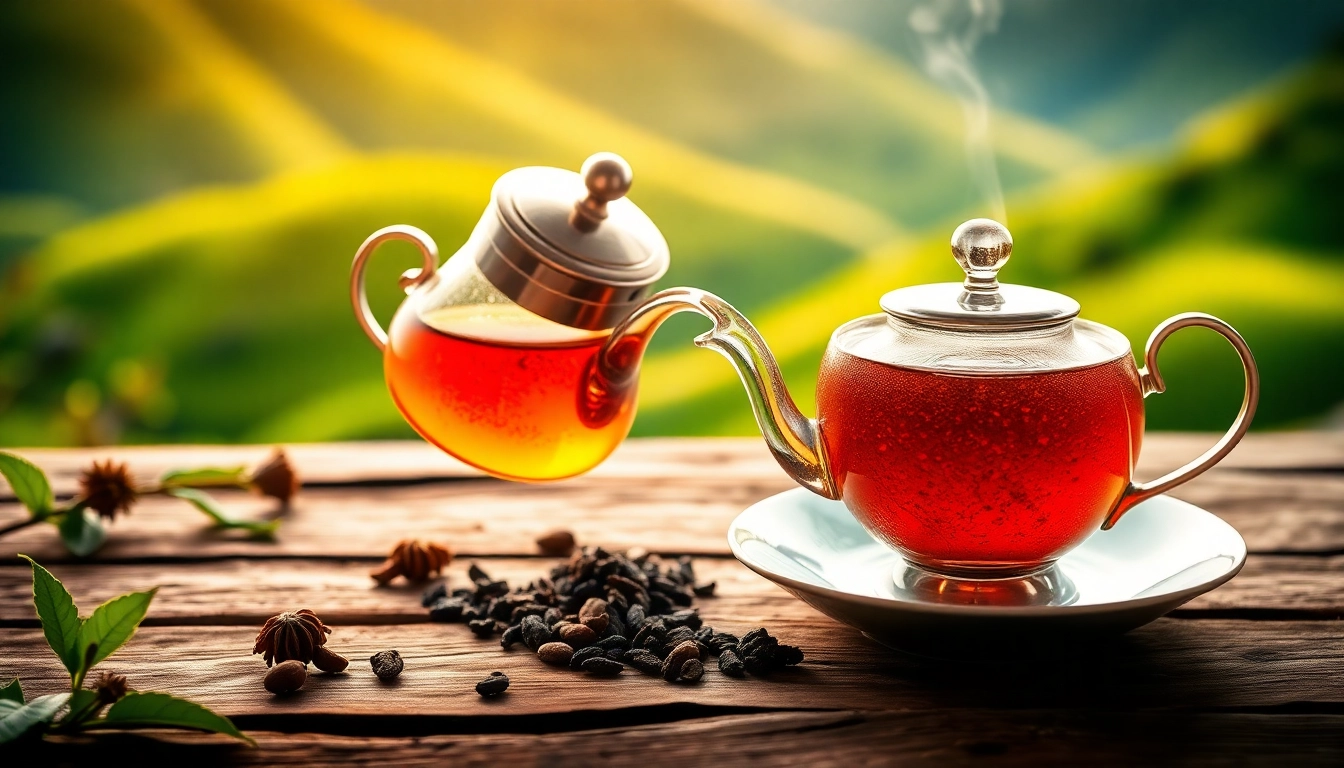Introduction to Nepali Tea
Nepali tea, a beverage derived from the leaves of the Camellia sinensis plant grown in the verdant hills of Nepal, offers a unique experience that blends lush flavors with rich cultural significance. Renowned for its distinctive characteristics, Nepali tea presents a refreshing alternative to its more commonly known counterparts such as Darjeeling tea, which is cultivated just across the border in India. This article explores the intricate details of Nepali tea, from its cultivation and flavor profiles to its health benefits and brewing techniques. For those seeking to explore authentic offerings, Nepali tea is a worthy avenue to pursue.
What is Nepali Tea?
Nepali tea is typically characterized by its aromatic profile and a delicate balance of body and flavor. The tea is grown in the high altitudes of Nepal, where the unique climate and soil conditions contribute to its distinctive taste. The country prides itself on cultivating not just black teas, but also green teas, white teas, and herbal blends that reflect the diverse ecosystems of the Himalayas.
The Growing Regions of Nepali Tea
The major tea-producing regions in Nepal are Ilam, Dhankuta, and the western part of the country. Ilam, located in the eastern hills, is especially noted for its high-quality black teas, while the temperature variations in Dhankuta contribute to flavorful green teas. The recent surge in interest over organic farming has led many farmers in these regions to shift towards sustainable production methods, further enhancing the quality of Nepali tea.
Cultural Importance of Nepali Tea
Tea drinking in Nepal is deeply embedded in the culture. Social gatherings often revolve around sharing a cup of tea, which is not merely a beverage but a symbol of hospitality. Festivals, family celebrations, and everyday life are marked by this comforting drink, making it significant in fostering social bonds among communities.
Types of Nepali Tea
Black Teas from Nepal
Nepal’s black teas are robust and complex. They often feature a muscatel flavor profile reminiscent of Darjeeling tea but come with their own unique nuances. Varieties such as those from Ilam are particularly celebrated for their rich, fragrant aromas and smooth textures.
Green Teas: A Light Alternative
Green teas from Nepal are also gaining acclaim, appreciated for their fresh, light taste and health benefits. These teas are typically less oxidized, preserving more of the natural antioxidants. Nepali green teas are often hand-rolled, resulting in visually appealing leaves that unfold beautifully when brewed.
Herbal and Specialty Blends
Beyond classic black and green teas, Nepal offers a range of herbal and specialty blends. Ingredients like lemongrass, ginger, and various spices are often infused into the teas, creating flavorful options that appeal to diverse tastes. These blends can provide additional health benefits and are ideal for those seeking non-caffeinated alternatives.
Health Benefits of Nepali Tea
Antioxidant Properties
Rich in antioxidants, Nepali tea offers several health benefits. Antioxidants help neutralize free radicals in the body, which can reduce oxidative stress and lower the risk of chronic diseases. Consuming high-antioxidant teas regularly can lead to improved overall health and longevity.
Boosting Metabolism
Studies suggest that certain compounds found in tea can help boost metabolic rates. This makes Nepali teas, particularly green varieties, an excellent choice for those looking to maintain a healthy weight or enhance their fitness efforts.
Benefits for Mental Well-being
Tea drinking can also have positive effects on mental health. The act of brewing and sipping tea can serve as a calming ritual, while certain compounds in tea, such as L-theanine, may promote relaxation and focus without causing drowsiness. Regular consumption is associated with lower levels of stress and improved cognitive function.
How to Brew the Perfect Nepali Tea
Choosing the Right Tea Leaves
Selecting high-quality tea leaves is crucial for brewing the perfect cup. Look for whole leaves rather than broken pieces, as these offer more flavor and essential oils. When choosing Nepali tea, consider the type of tea you prefer—black, green, or herbal—and ensure it’s sourced from reputable suppliers.
Step-by-Step Brewing Guide
- Begin by heating fresh, filtered water. The temperature will vary based on the type of tea: about 200°F (93°C) for black tea and around 175°F (80°C) for green tea.
- Measure out the tea leaves. Generally, use one teaspoon of leaves per cup of water.
- Add the tea leaves to a teapot or infuser and pour the hot water over them.
- Steep the tea for the appropriate time, typically about 3-5 minutes for black tea and 2-3 minutes for green tea.
- Once steeped, remove the leaves and pour yourself a cup. Enjoy it plain or with milk and sweetener, according to your taste.
Flavoring Options for Nepali Tea
One of the joys of brewing tea is experimenting with flavors. For black teas, consider adding a splash of milk or a dash of spices like cardamom or cinnamon. Green teas can be complemented with lemon or honey, while herbal teas can benefit from fresh mint or ginger, enhancing their aromatic qualities.
Where to Buy Quality Nepali Tea
Online Retailers for Authentic Nepali Tea
For those seeking authentic Nepali tea, several reputable online retailers specialize in organic and sustainably sourced varieties. Websites such as Nepali tea offer a range of options, from loose leaf to packaged blends, catering to diverse preferences.
Local Stores and Markets
For a more personal shopping experience, check local specialty tea shops or markets that may carry international selections. Engaging with shop owners can provide insights regarding different teas and brewing methods.
Tea Tours and Experiences in Nepal
A visit to Nepal can be an enriching experience for tea lovers. Many tea estates offer guided tours where visitors can learn about the cultivation and production of tea while sampling freshly brewed varieties. This immersive experience allows you to appreciate the complexities of Nepali tea firsthand.
